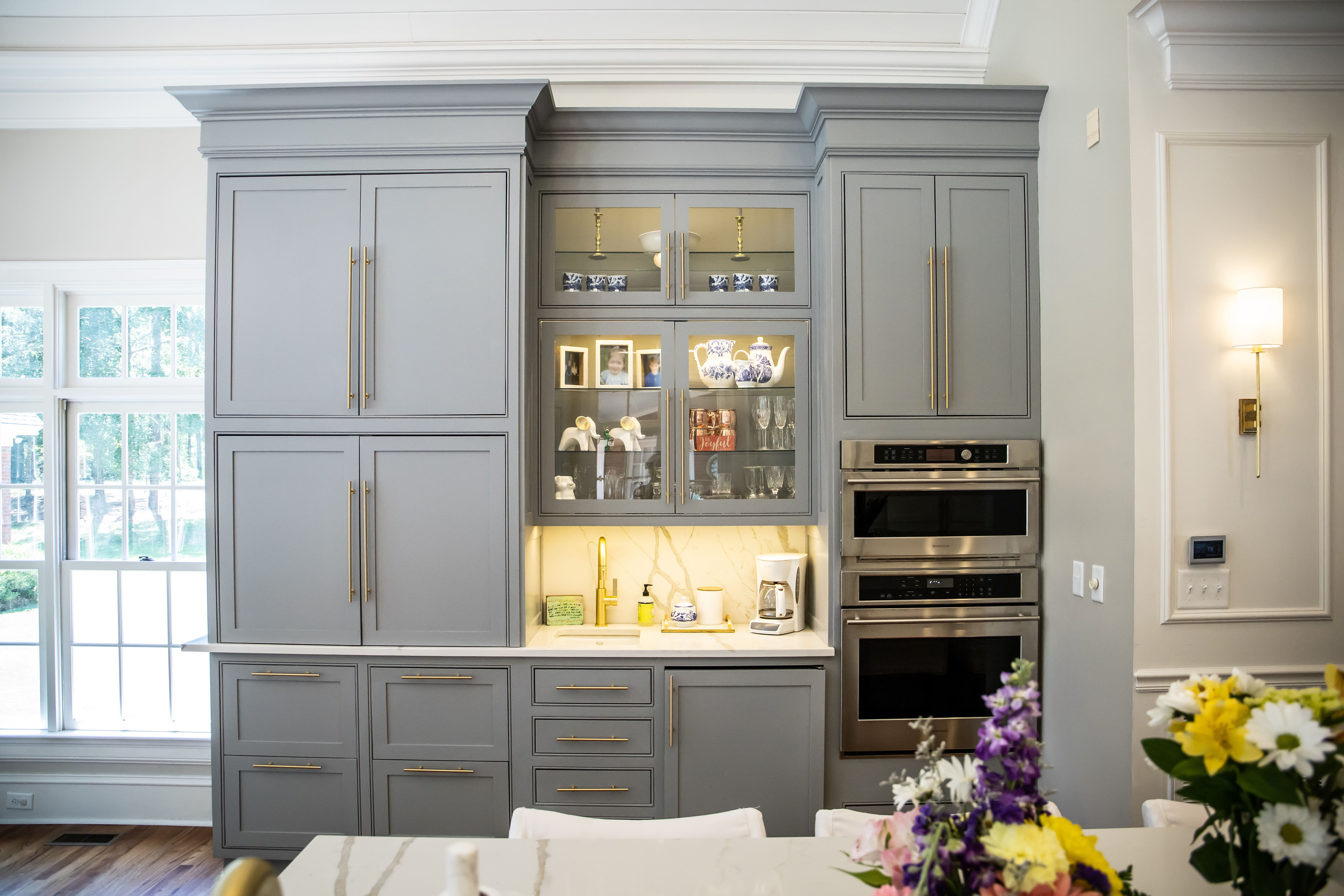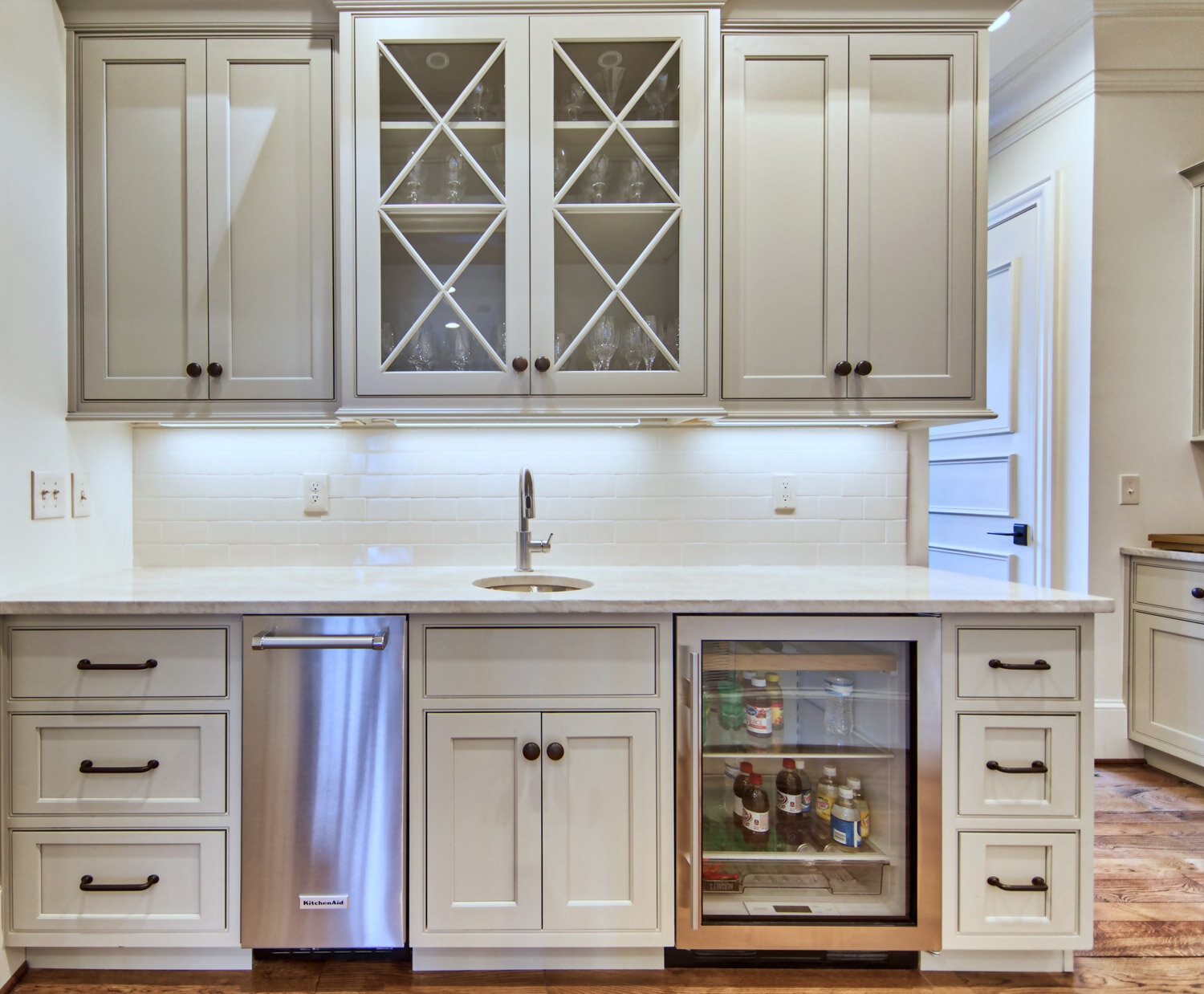Aesthetic Appeal of Beveled Edge Kitchen Cabinet Doors

Beveled edge kitchen cabinet doors offer a unique visual dimension, adding depth and character to any kitchen design. The subtle angle created by the beveling process significantly impacts the overall aesthetic, transforming a flat surface into a visually engaging element. This effect is particularly noticeable when light interacts with the beveled edge, creating dynamic shadows and highlights that enhance the beauty of the cabinet doors and the surrounding space.
Visual Impact of Beveled Edges Across Kitchen Styles
The visual impact of beveled edges varies depending on the kitchen style and the materials used. The following table illustrates how this subtle detail can dramatically change the overall feel of a kitchen.
| Style | Description of Visual Impact | Suitable Materials | Example Color Palettes |
|---|---|---|---|
| Modern | Clean lines and minimalist aesthetic are enhanced; beveling adds a touch of sophistication without overwhelming the design. | High-gloss lacquered wood, thermofoil, or sleek acrylics. | Monochromatic schemes (white, gray, black), accented with metallics. |
| Traditional | Beveling complements ornate details and classic moldings, adding depth and texture to the cabinetry. | Solid wood (cherry, mahogany, oak) with a rich finish. | Warm earth tones, deep blues and greens, cream and gold accents. |
| Farmhouse | Provides a rustic charm; the slightly softened edges complement the casual and comfortable feel. | Distressed wood, painted wood, or reclaimed wood. | White or off-white cabinetry with contrasting hardware; muted greens and blues. |
| Transitional | Blends modern and traditional elements; beveling acts as a bridge between the two styles, adding a touch of elegance. | Medium-toned woods (maple, birch) with a satin or semi-gloss finish. | Neutral color palettes with pops of color; soft grays, beige, and taupe. |
Light Reflection and Shadow Play
Beveling significantly enhances the interplay of light and shadow on cabinet doors. The angled edge acts as a subtle reflector, catching and diffusing light in a way that flat-panel doors cannot. This effect is particularly striking on wood grains with pronounced patterns. Imagine sunlight gently grazing across beveled oak doors; the light catches the peaks and valleys of the grain, creating a shimmering, three-dimensional effect. The shadows cast by the bevels add depth and texture, highlighting the natural beauty of the wood. Even with painted doors, the subtle shadow lines created by the bevels add a sense of movement and visual interest. The interplay between light and shadow brings a dynamic quality to the otherwise static surface of the cabinet door.
Comparison with Other Door Styles
The aesthetic of beveled edge doors differs significantly from other common styles.
Beveled edge kitchen cabinet doors – A comparison highlights these differences:
- Flat Panel Doors: Offer a clean, modern look, lacking the depth and visual interest provided by beveling. They appear simpler and less ornate.
- Raised Panel Doors: Feature a raised center panel, creating a more traditional and ornate appearance. Beveled edges can complement raised panels, adding further dimension, but they stand alone as a distinct style.
Manufacturing and Installation of Beveled Edge Kitchen Cabinet Doors

Creating beveled edge kitchen cabinet doors involves a precise process combining woodworking expertise and careful attention to detail. The resulting aesthetic appeal is enhanced by the skilled craftsmanship evident in both the manufacturing and installation phases. This section will detail the techniques and materials involved in bringing these beautiful doors to life.
Woodworking Techniques for Beveled Edges
The creation of a beveled edge requires specific woodworking techniques. Achieving a clean, consistent bevel depends on the chosen method and the skill of the craftsperson. Different joinery methods are also employed depending on the overall design and construction of the cabinet door.
Several methods exist for creating the bevel, including using a router with a chamfer bit, a hand plane, or specialized molding machinery. A router offers speed and precision for consistent bevels across multiple doors. Hand planing allows for more nuanced control and a potentially more organic finish. Larger-scale operations often utilize CNC machinery for high-volume production with exceptional accuracy.
The type of joinery used to construct the cabinet door itself also influences the final result. Common joinery methods include:
- Dado Joints: These provide strong, durable joints ideal for frame-and-panel doors, allowing for easy insertion of the beveled edge panel.
- Rabbet Joints: These are commonly used to create a recessed area for the panel, allowing the beveled edge to sit flush within the frame.
- Miter Joints: While requiring precise cuts, miter joints create a visually appealing, seamless edge, especially suitable for simple slab doors.
The manufacturing process typically follows these steps:
- Material Selection and Preparation: Choosing the appropriate wood, veneer, or laminate and preparing it to the correct dimensions.
- Cutting and Shaping: Cutting the wood to the desired size and creating the beveled edge using the chosen method (router, hand plane, or CNC).
- Joinery: Assembling the door components using the selected joinery method, ensuring accurate alignment and a strong bond.
- Finishing: Sanding the surface smooth, applying stain or paint, and adding a protective topcoat.
- Hardware Installation: Attaching hinges and handles.
- Quality Control: Inspecting the finished door for imperfections and ensuring it meets quality standards.
Materials Used for Beveled Edge Cabinet Doors
The choice of material significantly impacts the final look, durability, and cost of the cabinet doors. Different materials offer unique advantages and disadvantages.
| Material | Advantages | Disadvantages | Cost Range |
|---|---|---|---|
| Solid Wood (e.g., Oak, Maple, Cherry) | Durable, aesthetically pleasing, high-end look, can be refinished | Expensive, susceptible to moisture damage, requires more maintenance | $$$ |
| Wood Veneer | More affordable than solid wood, offers variety of wood grains, less susceptible to warping | Less durable than solid wood, can be damaged by scratches, limited refinishing options | $$ |
| Laminate | Affordable, durable, easy to clean, wide range of colors and styles | Can look less natural than wood, susceptible to chipping on edges, not easily refinished | $ |
| Medium-Density Fiberboard (MDF) | Smooth surface, inexpensive, accepts paint well | Not as durable as wood, can be damaged by moisture, prone to dents | $ |
(Note: Cost ranges are represented as $, $$, $$$, with $ representing the lowest cost and $$$ representing the highest.)
Installation of Beveled Edge Kitchen Cabinet Doors
Precise measurements and careful techniques are crucial for a seamless installation. Improper installation can lead to gaps, misalignment, and an overall unprofessional appearance.
The installation process typically involves these steps:
- Precise Measurement: Accurately measure the cabinet opening to ensure the door fits perfectly.
- Hinge Placement: Mark and install hinges on both the door and the cabinet frame, ensuring proper alignment.
- Door Hanging: Carefully hang the door on the hinges, making sure it is level and properly aligned.
- Handle/Pull Installation: Install the door handles or pulls, ensuring they are securely attached and aligned.
- Final Adjustments: Make any necessary adjustments to ensure the door opens and closes smoothly and without any gaps.
- Inspection: Inspect the installed door to confirm its proper function and aesthetic appeal.
Design Considerations and Customization Options for Beveled Edge Kitchen Cabinet Doors

Beveled edge kitchen cabinet doors offer a unique blend of elegance and practicality. The subtle bevel adds depth and visual interest, enhancing the overall aesthetic of the kitchen. Careful consideration of design elements and available customization options allows homeowners to create a truly bespoke kitchen space reflecting their personal style and functional needs.
Kitchen Layouts Showcasing Beveled Edge Cabinet Doors
The versatility of beveled edge cabinet doors allows for their seamless integration into various kitchen layouts. The following examples illustrate how these doors can transform the look and feel of different kitchen designs.
Layout 1: A galley kitchen featuring wall-mounted cabinets on either side of the room. The upper cabinets, measuring 30 inches in height and 36 inches in width, are arranged in a continuous line along each wall, providing ample storage. Lower cabinets, also 36 inches wide but 34 inches tall, are placed beneath the countertop, offering a balance of storage and workspace. Beveled edge doors in a rich cherry finish add warmth and sophistication to this classic design. The consistent use of beveled doors creates a unified look.
Layout 2: An L-shaped kitchen incorporating a peninsula. Base cabinets with beveled edge doors in a painted white finish create a clean, modern aesthetic. The peninsula, featuring a 48-inch long section of base cabinets with a 12-inch overhang for seating, incorporates a mix of 36-inch and 24-inch wide cabinets to accommodate appliances and storage. Wall-mounted cabinets above the peninsula and along the adjacent wall, using the same white beveled doors, provide additional storage without overwhelming the space.
Layout 3: A kitchen with a large island as the focal point. The island, constructed with 72 inches of base cabinets with beveled edge doors in a sleek, dark gray stain, provides ample counter space for food preparation and casual dining. Matching upper cabinets with beveled edges are installed above the island, creating a cohesive design. Wall cabinets along the perimeter of the room, using a lighter wood tone with beveled edges, balance the darker island, adding visual interest and depth to the room. The varying cabinet sizes on the island (including a 24-inch wide cabinet for appliance storage) demonstrate flexibility in design.
Customization Options for Beveled Edge Cabinet Doors, Beveled edge kitchen cabinet doors
The customization options for beveled edge cabinet doors are extensive, allowing for a high degree of personalization. The choice of materials, finishes, and hardware significantly impacts the overall look and feel of the kitchen.
- Edge Profiles: A variety of bevel profiles are available, ranging from subtle, almost imperceptible bevels to more pronounced, dramatic angles. The depth and angle of the bevel can be adjusted to suit different styles.
- Wood Types: Beveled edge doors can be crafted from a wide array of wood species, including oak, maple, cherry, walnut, and many more. Each wood offers a unique grain pattern, color, and durability.
- Finishes: Finishes can range from natural stains that highlight the wood grain to painted finishes in virtually any color. Distressed finishes can add character and a vintage feel.
- Hardware: Cabinet knobs, pulls, and hinges are crucial design elements. Various styles, materials (like brushed nickel, oil-rubbed bronze, or polished chrome), and finishes can be chosen to complement the overall aesthetic.
- Glass Inserts: Glass inserts can be incorporated into some cabinet doors to add visual interest and allow light to penetrate the cabinets, making the space feel brighter and more open.
Custom Beveled Edge Cabinet Door Design Example
A custom design might incorporate solid walnut doors with a medium-brown stain, showcasing the wood’s rich grain. A subtle, 1/4-inch bevel would add depth without being overly dramatic. The doors would measure 30 inches in height and 24 inches in width. Brushed nickel cup pulls would complement the warm wood tones. The overall aesthetic would be sophisticated, classic, and elegant, perfectly suited for a traditional or transitional kitchen. The cabinet’s internal dimensions would be adjusted to accommodate standard-sized plates and cookware.
